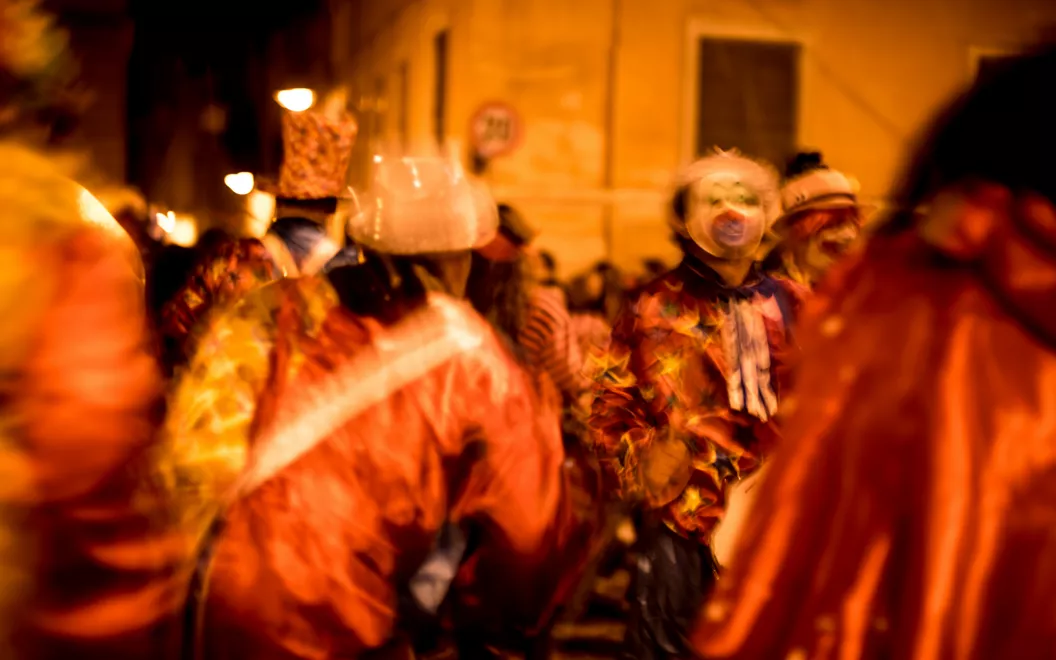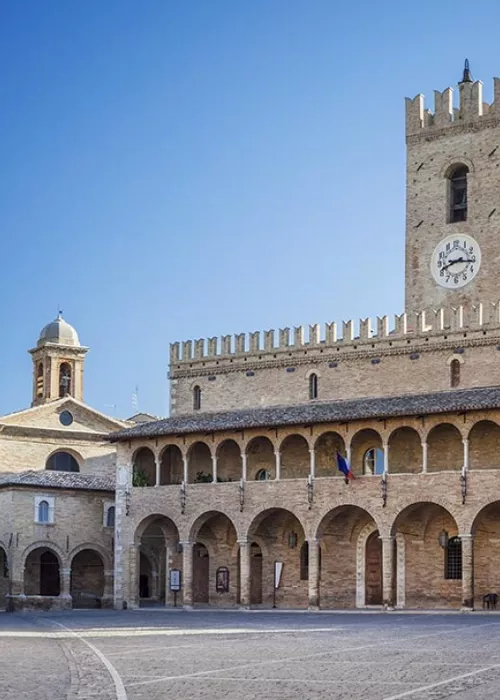The Historical Carnival of Offida, amid fun and colourful folklore
3 minutes
Offida, one of the most beautiful villages in Italy, is situated in the province of Ascoli Piceno. It is a place of utter charm that, once a year, becomes an - almost - cult destination for Carnival lovers.
This is because the Offida Carnival is an unmissable spectacle that will win you over with its atmosphere of participation, folklore and traditions, but above all with its exhilarating desire to have fun.
So here is everything you need to do and know about this historic Carnival that will have you heading off to visit Offida.
The crazy bullfight of the fake ox
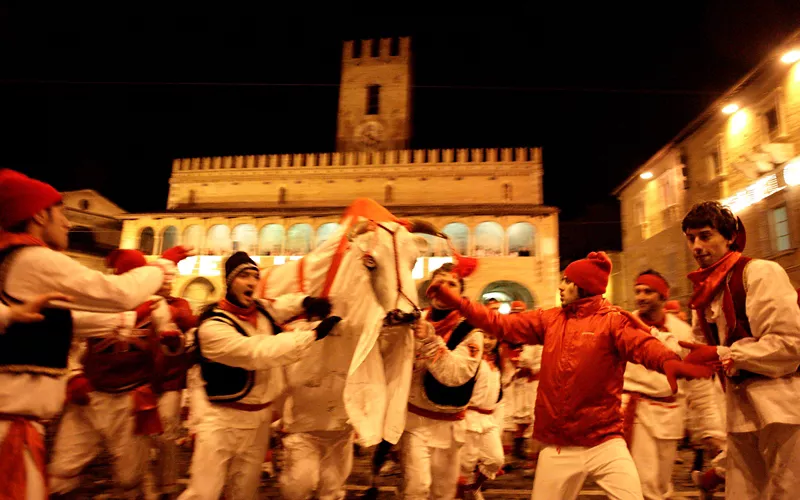
With the concise vocabulary that every dialect possesses, the people of Offida call it Lu bov fint e li vlurd, i.e., the fake ox and the bundles, alluding to the two high points of Offida's carnival celebrations: the farcical people's bullfight, with a large ox silhouette covered in a white cloth, which takes place in the alleyways and Piazza del Popolo on Shrove Friday, and the large fiery spindles, made of reeds and straw, carried on Shrove Tuesday in a procession through the streets of the centre to the main square, where they are used to light the great bonfire around which the last lysergic feast is held.
Photo credit: Offida lu bov1 ph Ignacio Maria Coccia
Behind it all are the historic covens
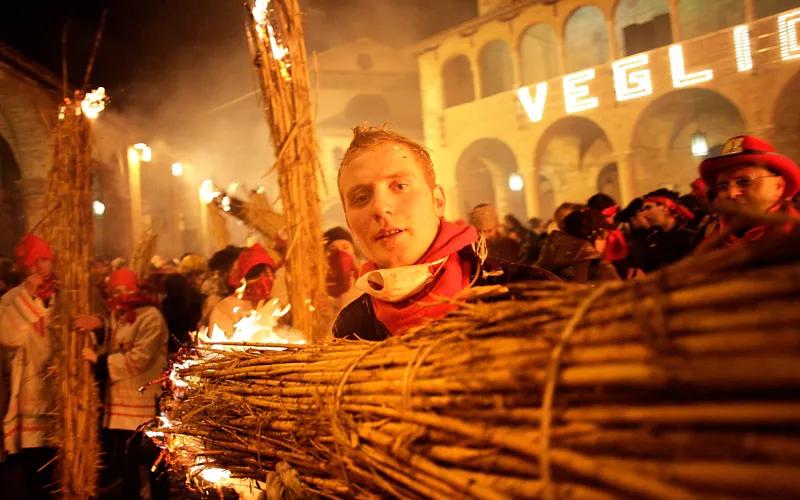
But around this event, whose origins seem to be connected to ancient propitiatory peasant rites dating back to the distant 16th century, there is much more. Costumed balls in the red velvet and stucco setting of the Serpente Aureo theatre, masked processions, food and wine banquets and, most of all, a long preparation period that begins on 17 January, the day of Saint Anthony the Abbot, and continues following a strict calendar of events that relies on the extraordinary organisational machine of the congregas, historical masked groups, usually linked by friendship or kinship, created to encourage togetherness and an attachment to traditions.
Each coven has its own organisation, a uniform, a banner, and a distinctive form of participation in the Carnival. They are the real leaders of the carnival festivities, the creative people who tirelessly produce music, dancing and other types of entertainment in the squares and at traditional gatherings. And the real celebration begins when, on Shrove Thursday, the mayor of the Marche village hands them the keys to the city.
Photo credit: Offida Vlurd 2 ph Ignacio Maria Coccia
The People’s Carnival
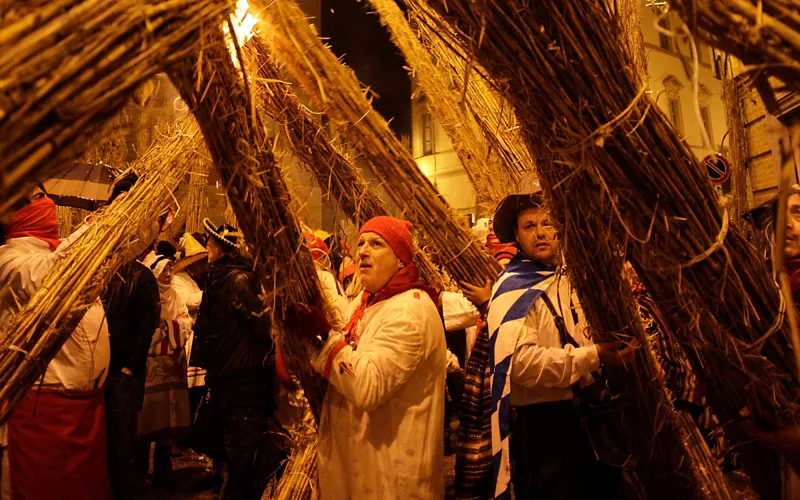
For everyone, the traditional mask is the guazzarò, the white cloth garment edged in red (the colours of Carnival), a close relation of the tunic that men and women used to wear for working in the fields. It was also originally adopted during the traditional procession of li vlurd, so as not to get dirty while carrying the burning and partly charred bundles on their arms. Variously reworked and customised, over time it has become the traditional uniform of carnival celebrations.
It is said that in Offida everyone has a guazzarò waiting for them: it is the municipal administration and the pro loco itself that encourages everyone to wear it. At the Offida Carnival, it is difficult to feel like a tourist; Carnival here is not a party to be attended, but a collective and at times somewhat frenzied ritual in which everyone, Offidans and visitors alike, can take part. It is an authentic interpretation of the free and inclusive spirit of Carnival: forgetting for a few days any formalities or divisions, lightening one's burdens, and sharing rather than dividing.
Photo credit: Offida Vlurd 1 ph Ignacio Maria Coccia

